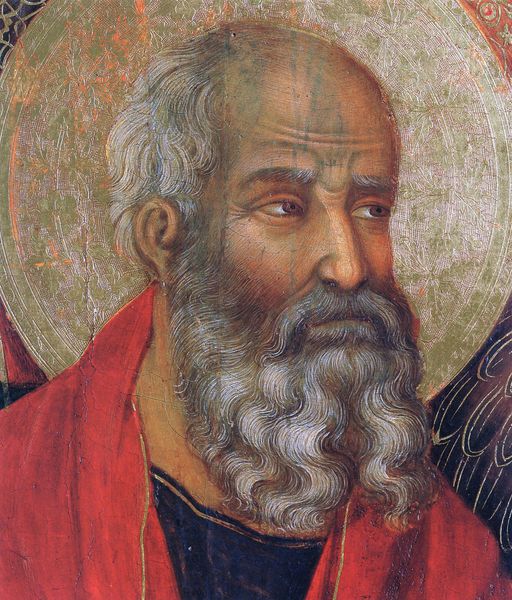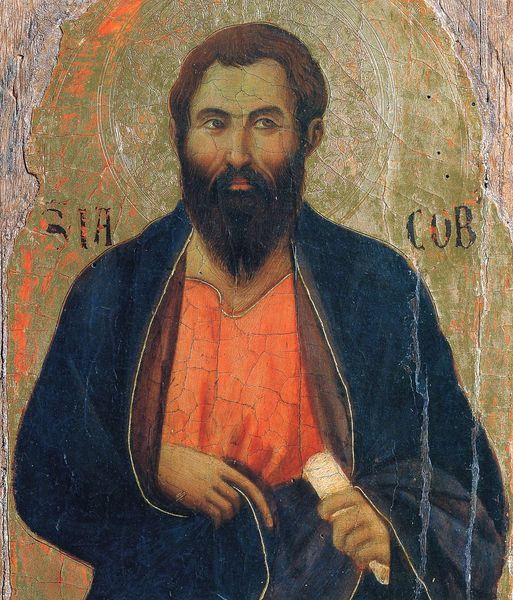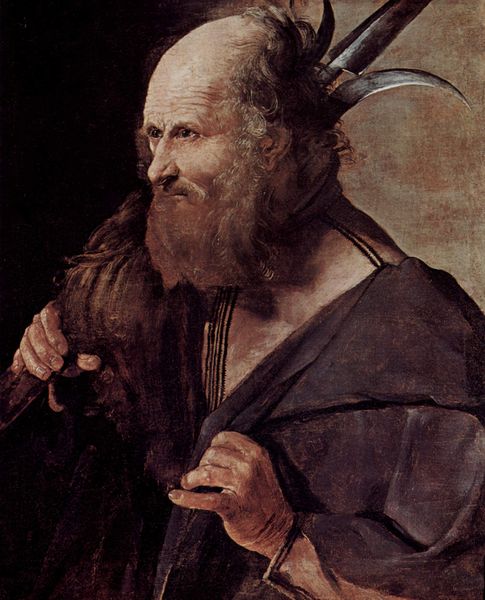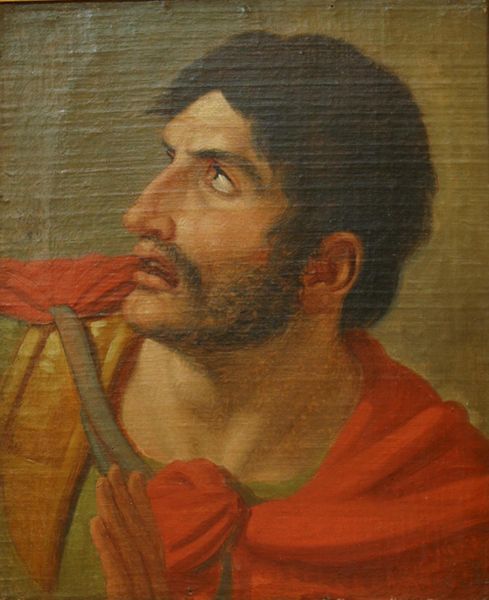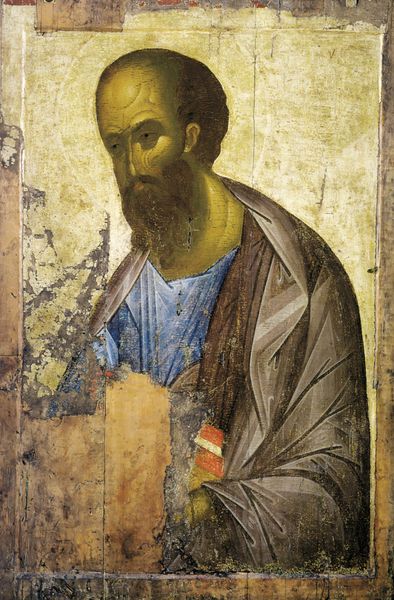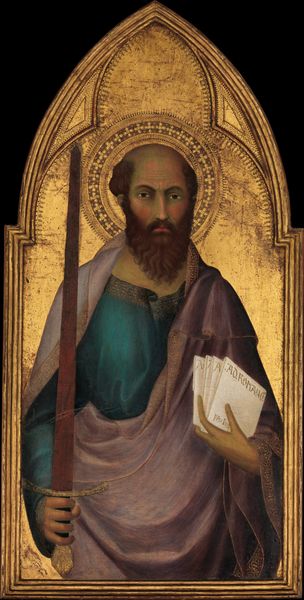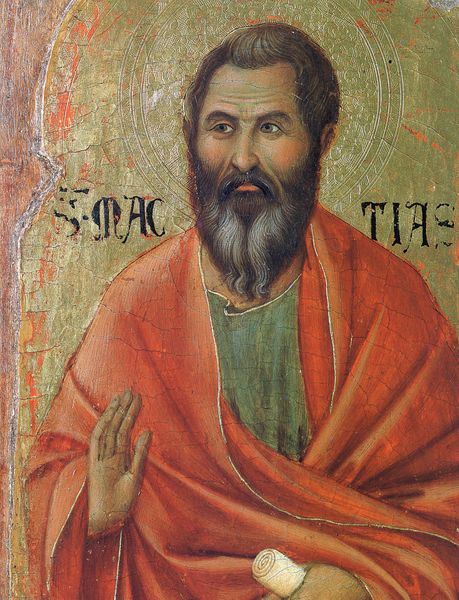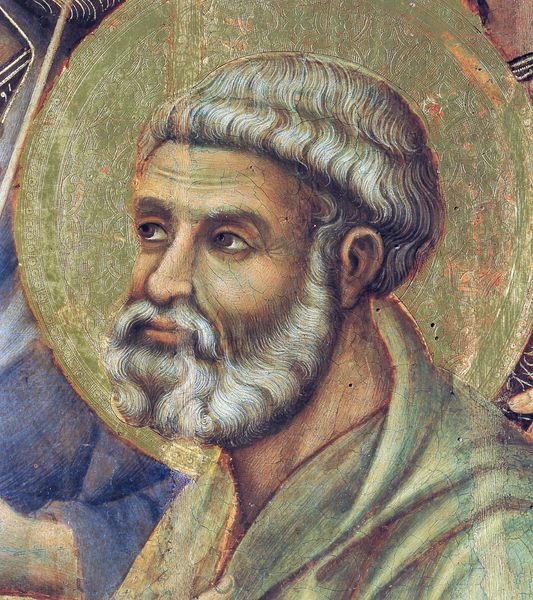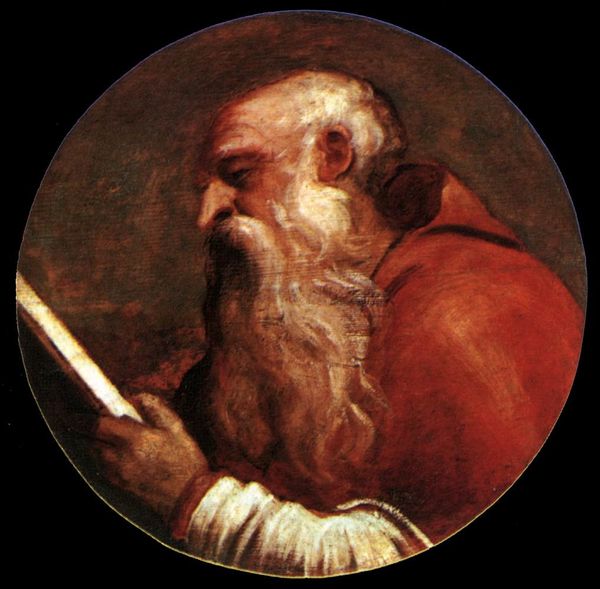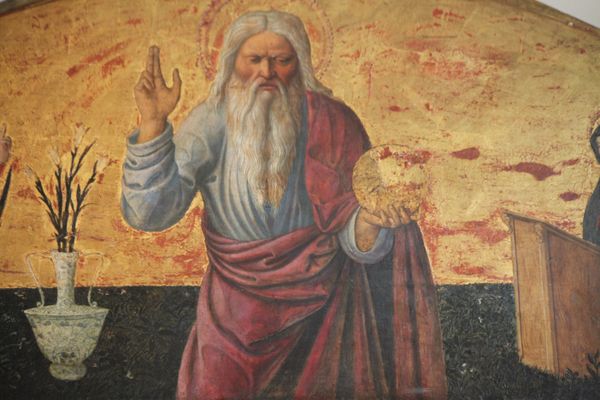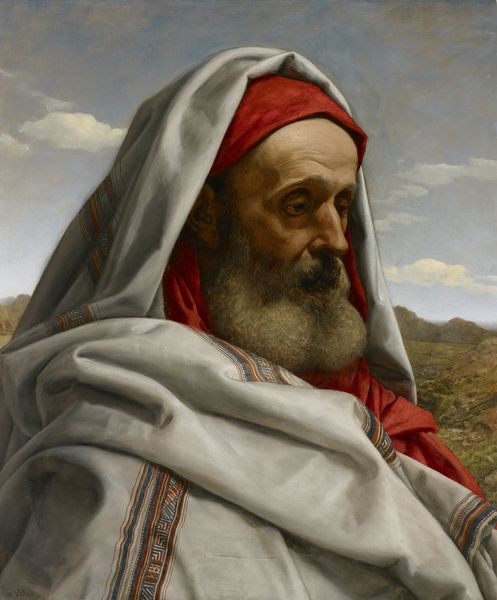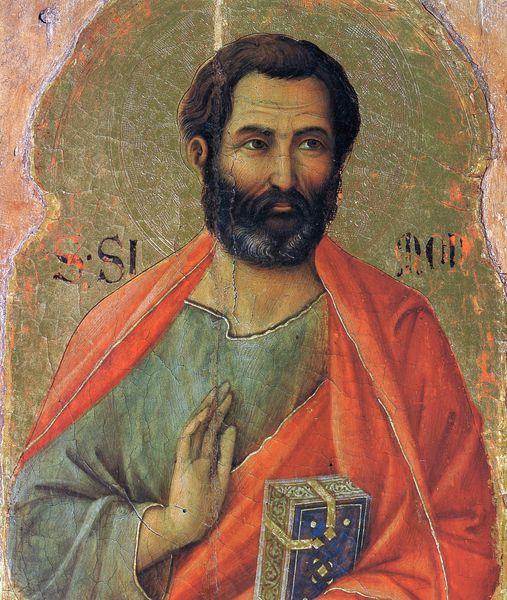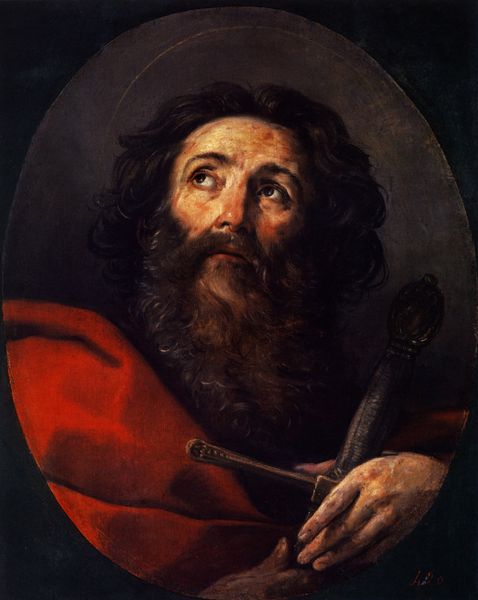
tempera, painting
#
portrait
#
byzantine-art
#
medieval
#
tempera
#
painting
#
sienese-school
#
christianity
#
history-painting
#
italian-renaissance
Copyright: Public domain
Curator: What we have here is a detail from Duccio's "Madonna and Child on a Throne," dating back to 1311. It's a tempera painting, very much in the Byzantine style. Editor: There’s an immediate, almost unsettling presence emanating from this fragment. The figure’s gaze is intense, and you can see every brushstroke layered to give depth to the face. What about the materiality? Curator: Indeed, notice how Duccio employs tempera. He achieves a remarkable luminosity. Look at the modeling of the face; the careful, precise application of pigment allows a softness to emerge despite the constraints of the medium itself. He has meticulously added and layered thin glazes for these effects. Editor: Thinking about the materials practically—where were these pigments sourced? Tempera’s a binding process involving egg yolk. Considering the medieval workshop, we can understand the whole craft production system: sourcing raw materials, apprenticeship, labor. Even the type of panel and the gesso underneath impact the final presentation. Curator: An excellent point about the embodied labor. The gold leaf work also reinforces that. This image has religious symbolism—and how it works formally: a central hierarchical composition with a strict and elegant execution within its own visual logic. This formal arrangement and calculated composition communicate important symbolic information. Editor: And considering the function, something like the use of egg tempera has connotations in itself—it provides unique working conditions. Egg tempera has unique behaviors. Duccio isn’t only an artist; he's an artisan participating in material processes to produce icons of reverence for collective religious experiences and personal ritual uses. The value isn't purely aesthetic; it’s born of labor, trade, and a shared spiritual economy. Curator: That contextual background helps further amplify the image’s effect. Studying the painting’s elements such as color palette and surface finish reveals that each element is carefully integrated to elevate a deeper connection between the earthly and divine realms of faith in viewers. Editor: It underscores the cultural role art plays – it's all intricately interconnected; Duccio was a conduit of these intersections in religious experience at this time. Curator: Agreed, both the intrinsic artistic merit, as we discover looking within this visual language and the social context provide rich insight. Editor: Understanding the painting on different perspectives can bring awareness to our world.
Comments
No comments
Be the first to comment and join the conversation on the ultimate creative platform.
